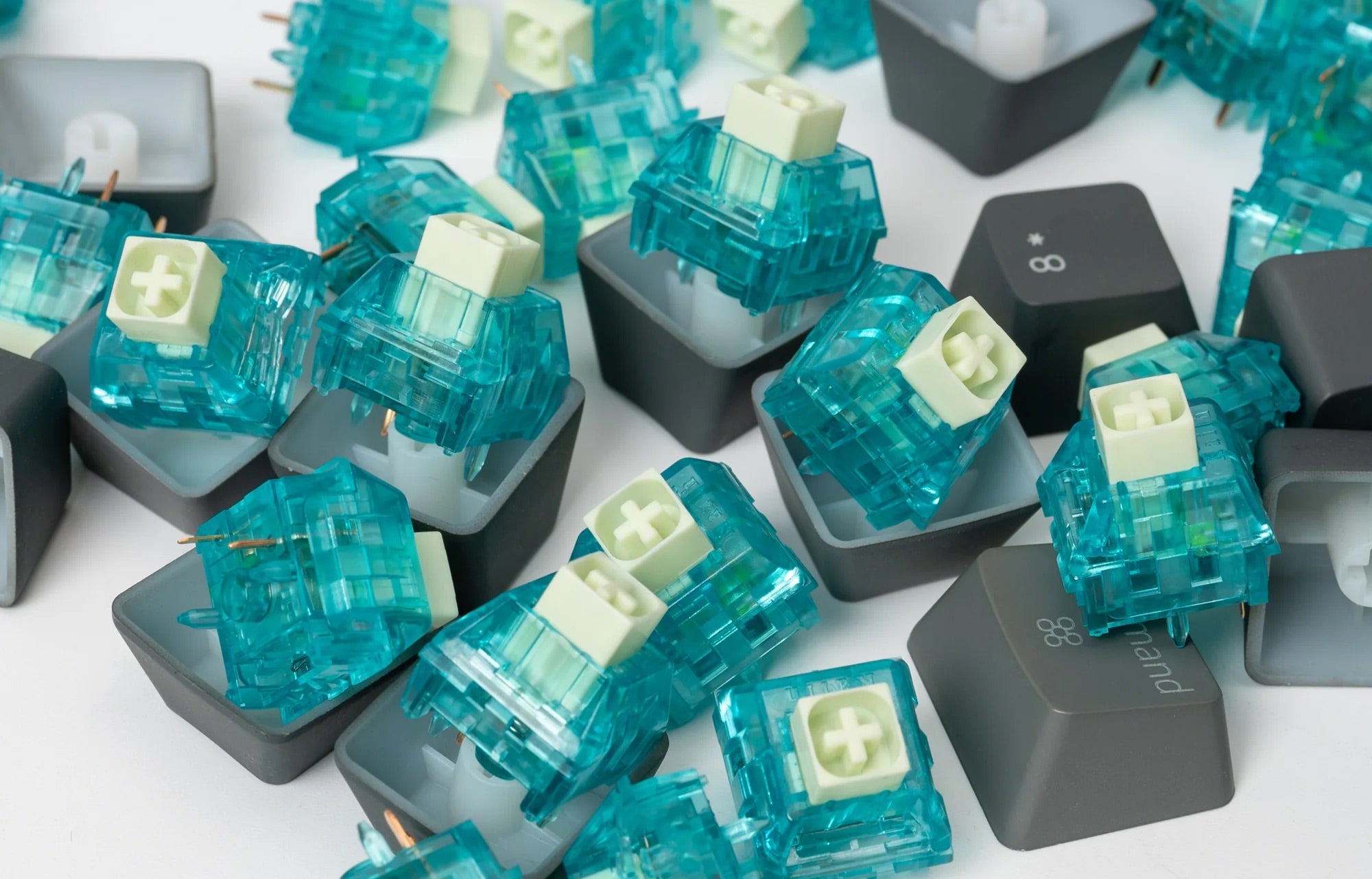If you're part of the mechanical keyboard community, you've probably heard the debate: Are box switches more stable than traditional mechanical switches? With the rise in popularity of these unique switches, many keyboard enthusiasts are questioning whether they offer a significant advantage in terms of typing experience, durability, and stability. Let's explore the mechanics behind box switches and why they may—or may not—be more stable.
What Are Box Switches?
Box switches are a type of mechanical switch developed by Kailh, a popular switch manufacturer. They are so named because of the rectangular "box" structure surrounding the stem. This additional housing is one of the key differentiators that sets box switches apart from traditional mechanical switches like Cherry MX.
Unlike standard switches, which feature a simple cross-shaped stem, box switches encase the stem in a surrounding box-like structure. This design offers enhanced dust and moisture protection, but it also has another key benefit: improved stability.
Understanding Stability in Mechanical Switches
When discussing "stability" in mechanical switches, we typically refer to two aspects:
- Wobble: This is the side-to-side movement of the switch stem when a key is pressed.
- Consistency: The uniform feel of the switch when pressed from different angles.
In many mechanical switches, especially those without a box design, the stem can wobble, which can lead to an inconsistent typing feel. Wobble becomes more apparent when typing quickly or when pressing keys off-center, leading to an unsatisfying and unstable experience.
Why Are Box Switches More Stable?
-
Reduced Wobble: Thanks to the box housing around the stem, box switches are designed to minimize wobble. The additional casing helps guide the stem during keypresses, offering more precise movement. This means the switch is less likely to shift or tilt, even if you press a key at an angle.
-
Uniform Keypresses: Another benefit of the box structure is that it distributes force more evenly across the switch. Whether you press a key dead center or slightly off-center, the box switch is more likely to give you a uniform, consistent typing experience. This makes box switches ideal for fast typists or gamers who need consistent feedback and performance from their keyboard.
-
Enhanced Durability: While not directly related to stability, the box design also offers protection against dust and moisture, increasing the longevity of the switch. Over time, this can lead to a more reliable performance since dust buildup can affect switch performance and contribute to wobble in traditional designs.
Comparing Box Switches with Traditional Mechanical Switches
Traditional Mechanical Switches
- Wobble: In traditional switches like the Cherry MX or its clones, the stem is less supported. This can lead to more noticeable wobble, especially during heavy typing or gaming sessions.
- Feel: The typing experience can sometimes feel less uniform because of the wobble, especially on larger keys where stabilizers are more important.
Box Switches
- Stability: The box design drastically reduces wobble, creating a more solid typing experience. Each keystroke feels uniform and responsive.
- Protection: The box structure adds an extra layer of protection against environmental factors, improving long-term performance.
Are Box Switches Perfect?
While box switches excel in stability, they are not without their downsides:
-
Switch Preference: The typing feel of a box switch can be polarizing. Some people love the reduced wobble and consistent actuation, while others find the feel too rigid or "boxed in" compared to the more traditional mechanical switches. The reduced wobble can make box switches feel stiffer or less "natural" to some users.
-
Availability and Variety: While Kailh box switches are popular, they don't offer as many options as traditional mechanical switches. If you're looking for a particular actuation force, sound profile, or tactile feedback, you may have more limited choices within the box switch category.
-
Stabilizers Still Matter: Even with more stable switches, stabilizers on larger keys like the spacebar, enter, or shift keys still play a significant role in the overall stability of your keyboard. The improved switch stability won't fully eliminate the need for good stabilizers.
Conclusion: Are Box Switches More Stable?
In short, yes, box switches are generally more stable than traditional mechanical switches. The box-like enclosure around the stem significantly reduces wobble and ensures a more uniform typing experience. This can lead to a more satisfying feel, especially for those who value consistency and precision in their typing or gaming sessions.
However, like all keyboard switches, it ultimately comes down to personal preference. If you’re someone who prefers a more solid, uniform keypress, box switches could be your ideal choice. But if you enjoy the slightly looser, more flexible feel of traditional switches, you may find box switches too rigid.
As with most things in the keyboard world, trying out different switches is the best way to figure out what works best for you. Box switches offer clear advantages in stability, but only you can decide if that’s what matters most for your typing experience.






